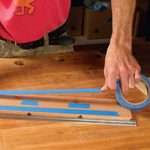More letters on glue test article:
There’s so much “information” floating around that it’s refreshing to have some real comparisons and conclusions, with data to back them up. I applaud you for being willing to upset advertisers for the sake of the reader. My only quibble is that there was not a urea-formaldehyde glue included in the comparisons. I know they’re not as popular as the others, but with their low creep factor, they work very well for bent laminations.
—Jeff Bratt, San Diego, California
A glue absent from your article was (Weldwood) plastic resin. Its long open time and low creep make it the go-to adhesive for complex glue-ups and bent laminations. After conducting tests similar to the ones described in your article, I found that joint strength with plastic resin glue increases as much as nine times during its viable pot life of roughly two hours. I now tell my students that after mixing their glue to let it rest (slake) for 30 to 45 minutes prior to use, dramatically strengthening the adhesive bond.
—Paul Kinsey, College of the Redwoods, Eureka, California
One methodological issue seems problematic: These open bridle joints didn’t seem to be clamped tight while the glue cured. Yet polyurethane glue expands as it cures. Does this not imply that the gaps in the joint would be widened by the glue itself, thereby weakening the bond for this type of glue?
—Peter Wells, Marigny l’Eglise, France
I wonder if you used any type of filler with the epoxy when used in the loose joint. After building six boats, I’ve concluded that straight resin without a filler does not result in a strong joint.
—Hans Wendler, Epsom, New Hampshire
Fine Woodworking Recommended Products

3M Blue Tape

Blackwing Pencils

Veritas Micro-Adjust Wheel Marking Gauge




















Log in or create an account to post a comment.
Sign up Log in